AI in Drone Gardening Analytics
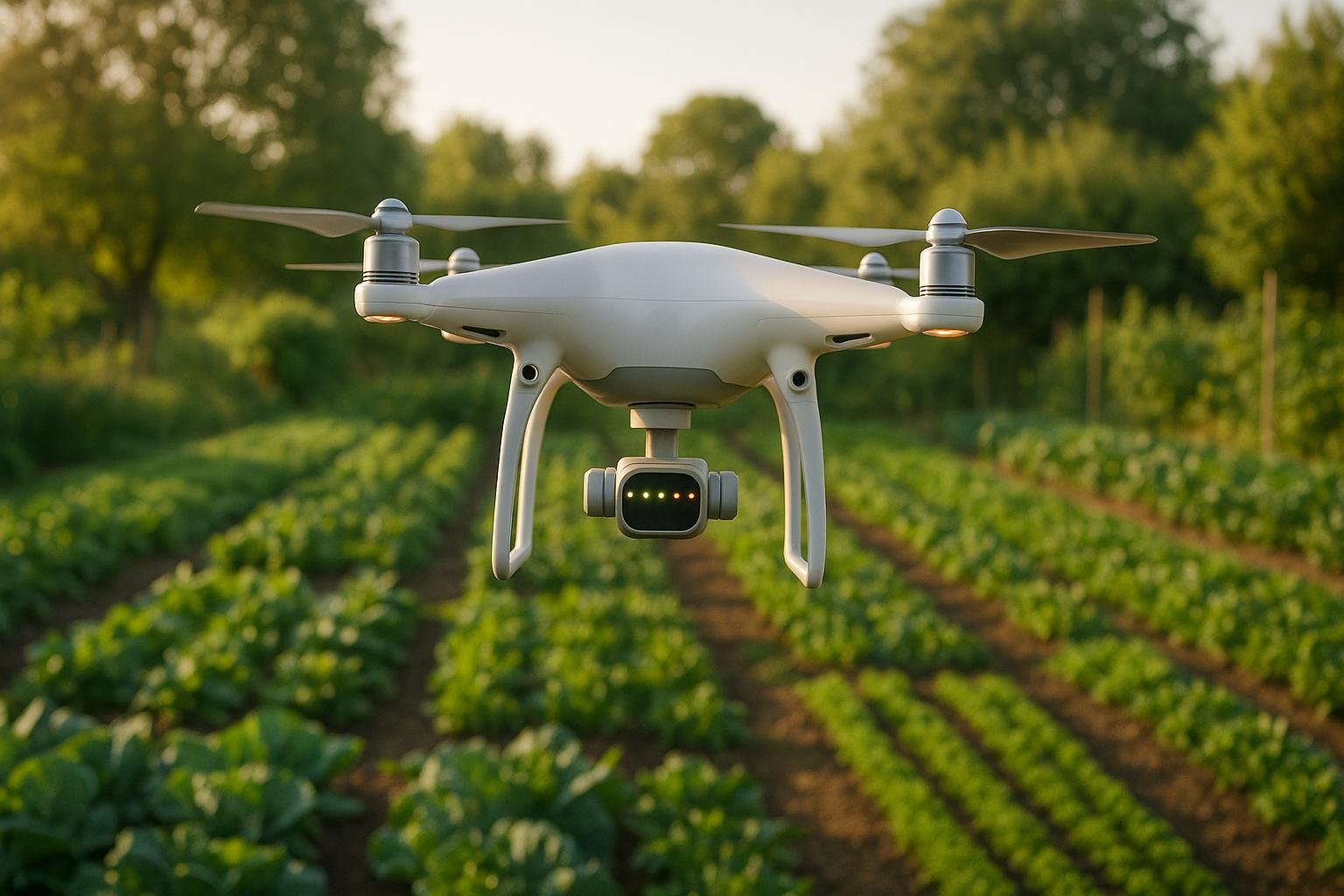
AI-powered drones are transforming gardening by offering precision, efficiency, and data-driven insights. These drones monitor plant health, optimize resources, and reduce manual labor, making them a game-changer for both small gardens and large-scale operations. Here's what you need to know:
- How It Works: Drones equipped with sensors (like multispectral and thermal) collect detailed data on plant health, soil conditions, and more. AI processes this data to identify issues like pests, diseases, and nutrient deficiencies.
- Benefits: Reduced pesticide use (up to 30%), lower labor costs (up to 50%), and water savings (20%). Drones can analyze up to 500 acres daily with millimeter-level accuracy.
- Challenges: High costs (starting around $150,000), short battery life (20–40 minutes), and complex regulations limit accessibility for smaller-scale users.
- Future Potential: Advancements in AI and drone technology promise better autonomy, real-time analysis, and integration with garden planning tools for tailored recommendations.
AI-driven drones are reshaping how gardens are monitored and maintained, combining precision with actionable insights to improve efficiency and reduce environmental impact. While challenges remain, the technology is evolving rapidly, offering exciting possibilities for gardeners and farmers alike.
Using Drones & AI for Precision Weed Mapping and Spraying - WA Wheat Farm

Core Technologies Behind AI-Powered Drone Gardening
AI-powered drone gardening relies on three key components: advanced sensors, powerful AI algorithms, and seamless integration with planning platforms. Together, these technologies transform aerial data into actionable insights, paving the way for smarter, data-driven gardening practices.
Drones and Sensors for Garden Applications
Modern drones equipped with advanced sensors have become essential tools for monitoring and improving garden conditions. These drones use a variety of imaging technologies, including RGB, multispectral, hyperspectral, thermal, LiDAR, and radar sensors, to gather detailed data [6].
- RGB sensors: These capture true-color images similar to what the human eye sees, making them ideal for monitoring plant growth and spotting visible damage [6][7].
- Multispectral sensors: By capturing data beyond the visible spectrum, these sensors reveal subtle differences in light reflectance, which can indicate plant health through chlorophyll levels [4].
- Thermal sensors: These detect temperature variations, helping to identify irrigation problems, disease hotspots, and plant stress [4][6].
- LiDAR technology: Using laser pulses, LiDAR creates precise 3D models of plant canopies and growth patterns, even in dense vegetation, making it invaluable for garden planning [6].
A practical example of these technologies in action comes from Syngenta's collaboration with DJI Dock and DroneDeploy at their Illinois research farm. They used the Matrice 30T drone, equipped with a zoom sensor for close-up leaf inspections and a thermal imaging camera to analyze plant stress caused by water and fertilizer issues. The collected data was processed to create detailed maps and thermal analytics [5].
| Sensor | Type | Number of Bands | Bands | Estimated Cost |
|---|---|---|---|---|
| Sentera NIR | Multispectral | 2 | R, NIR | $2,000 |
| MicaSense RedEdge-MX | Multispectral | 5 | B, G, R, RE, NIR | $5,500 |
| Parrot Sequoia+ | Multispectral | 5 | G, R, RE, NIR, RGB | $3,500 |
| SlantRange 4P+ | Multispectral | 4 | R, RGB, RE, NIR | $4,950 |
| MicaSense Altum | Multispectral & Thermal | 6 | B, G, R, RE, NIR, Thermal | $10,000 |
AI Algorithms for Data Processing
AI algorithms are the brains behind drone gardening, turning raw data into actionable insights. These algorithms analyze images to detect issues and refine garden management strategies.
- Convolutional Neural Networks (CNNs): These excel at extracting visual features, making them highly effective for disease classification. However, they require large datasets for optimal performance [8].
- Vision Transformers (ViTs): Unlike CNNs, ViTs analyze entire images to identify patterns and relationships, offering scalability and high accuracy. Hybrid models combining CNNs and ViTs have shown even better results [8].
For instance, CropViT, a lightweight transformer model, achieves a remarkable 98.64% accuracy in plant disease classification [8]. This precision is critical, as pests and diseases cause up to 40% of global crop losses annually, costing an estimated $220 billion [8]. Additionally, object detection models can pinpoint and categorize specific regions in images, enabling automated identification of pests [9].
Khawla Almazrouei, a Robotics Engineer at the Technology Innovation Institute, highlights the importance of these advancements:
"By promoting innovative methods and addressing existing challenges, AI-driven plant disease detection can transition from promising research to real-world impact, strengthening the resilience of global agriculture and securing the future of food production." [8]
Integration with Garden Planning Platforms
The true potential of drone data is unlocked when integrated into garden planning platforms. These platforms use the data to create actionable plans, combining advanced sensors and AI analytics for tailored gardening solutions.
Take AIGardenPlanner, for example. This platform uses drone-collected multispectral and thermal data to provide plant recommendations based on soil conditions, moisture levels, and microclimates detected from aerial analysis. With over 50 garden styles to choose from, designs can be customized to match real-time conditions rather than relying solely on static recommendations.
Integration also requires precise hardware, such as drones with high-resolution RGB cameras and reliable GPS systems for autonomous flight. Robust communication systems ensure smooth data transfer between drones, ground control, and cloud services [4][10].
A compelling example of integration comes from Komatsu's partnership with DAC.digital. They developed a system using high-resolution RGB imagery and LiDAR data to identify harvestable trees and obstacles. By processing 2D and 3D data, the system reduced the need for field reconnaissance and optimized harvesting routes [12].
The economic potential here is immense. The drone software market is expected to grow from $5.1 billion in 2022 to $11.2 billion by 2027, with an annual growth rate of 17.1% [11]. For garden planning platforms, this growth signals a shift from static designs to dynamic, data-driven insights that adapt to evolving garden conditions.
Applications of AI in Drone Gardening Analytics
AI-powered drones are changing the game for gardeners and farmers by offering smarter ways to care for plants, manage resources, and practice sustainable gardening. These tools bring measurable advantages to gardens of all sizes.
Pest and Disease Detection
AI-equipped drones can spot plant problems before they become visible to the naked eye. Using multispectral and hyperspectral sensors, these drones capture detailed images that reveal subtle changes in color, texture, or temperature - early signs of diseases or pests. For instance, models like CropViT boast over 98% accuracy in detecting plant issues[8]. Other AI tools, such as a U-Net model, have reached 97.13% accuracy in identifying wheat yellow rust, while Mask R-CNN achieved a 0.96 Intersection over Union (IoU) score for detecting northern leaf blight in maize[14]. Vegetation indices like NDVI and NDRE help pinpoint stress in plants, and drones can even identify apple scab disease with 95% accuracy[2].
Considering that pests and diseases account for up to 40% of global agricultural losses[13], early detection through AI-powered drones allows for targeted action, reducing crop damage and limiting chemical use.
"As plant diseases continue to threaten global food security, AI-powered drones and advanced machine learning models are revolutionizing early detection methods, offering scalable, efficient, and accurate solutions for modern agriculture."
– DRONELIFE[8]
Beyond immediate fixes, these insights help gardeners refine their long-term strategies for healthier plants.
Predictive Analytics for Garden Management
AI doesn't just stop at identifying current issues - it also predicts future conditions to streamline garden care. By analyzing historical drone data, AI can forecast trends and create optimized maintenance schedules. Drones collect information on soil moisture, plant growth, and environmental factors, which machine learning algorithms then combine with weather forecasts and seasonal patterns. This allows for precision in irrigation, fertilization, and harvesting.
The agricultural drone market reflects this growing interest, with projections showing an increase from $1.2 billion in 2020 to $4.8 billion by 2025, growing at a 31.4% annual rate[16].
"Drone imagery compensates for the limitations of drive-by scouting. Where previously you only had time to walk a few rows into your fields or check on things from the driver's seat of your pickup, with aerial imagery it is now practical to evaluate the health of your entire field, and employ targeted scouting to diagnose crop quality concerns."
– Anna Weigel, Agronomist at Aerial Vantage[15]
Platforms like AIGardenPlanner take these insights further by offering personalized garden designs. Combining drone-captured multispectral data with over 50 design styles, this tool provides gardeners with tailored recommendations based on real-time soil and microclimate conditions.
Resource Optimization and Eco-Friendly Practices
AI-powered drones also excel at optimizing resources, making gardening more efficient and environmentally friendly. For example, about 65% of nitrogen fertilizers go unused, contributing to 2.6 billion tons of carbon emissions annually[17]. AI drones address this by enabling precise application of water, fertilizers, and pesticides. Specialized drones can cut chemical use by up to 35%, while AI-driven weed control systems have reduced herbicide use by up to 90%[2]. Thermal sensors on drones further enhance irrigation strategies by accurately monitoring soil moisture, minimizing water waste.
"Technology like the use of drone imaging will help determine how much fertilizer might be needed mid-season, promoting more efficient use of resources and supporting sustainable farming practices."
– Zack Brym, Associate Professor of Agronomy at UF/IFAS TREC[1]
The efficiency gains are impressive. AI-powered drones reduce labor to 3–4 hours per acre, compared to 8–12 hours using traditional methods. They also deliver 15–20% yield increases and 25–35% cost savings. The table below highlights these benefits:
| Farming Method | Yield Increase | Resource Efficiency | Labor Hours/Acre | Cost Savings | Environmental Impact Reduction |
|---|---|---|---|---|---|
| Traditional Farming | Baseline (0%) | 0% | 8–12 hrs | 0% | Baseline (0%) |
| AI-Powered Drones | +15 to 20% | 20–30% reduction | 3–4 hrs | 25–35% | 15–25% |
| AI-Driven Soil Analysis | +10 to 18% | 18–25% reduction | 4–5 hrs | 22–30% | 15–22% |
sbb-itb-4d6a8dd
🚀 Ready to Reinvent Your Garden?
Join thousands of homeowners who have transformed their gardens using our AI design tool. Upload one photo to explore endless possibilities.
Get your AI garden designs →Pros and Cons of AI in Drone Gardening
AI-powered drones are making waves in the gardening and agriculture world, offering tools that can change how gardeners care for plants. But, like any new technology, these tools come with both benefits and challenges. Let’s take a closer look at the upsides and the hurdles of using AI in drone gardening.
Advantages of AI-Powered Drone Analytics
AI-driven drones bring more than just convenience - they offer real improvements in how gardens are managed, potentially changing the way plant care is handled.
These drones excel in precision. For example, they can detect crop diseases with over 90% accuracy[18], allowing gardeners to act quickly and apply treatments exactly where needed. This kind of accuracy saves time and resources.
In terms of efficiency, AI drones can monitor up to 500 acres in a single day[3]. That’s a game-changer for large-scale gardeners. And the financial benefits are clear: these drones can deliver a return of $2–$12 per acre[2], making them a smart investment for many.
On top of that, they help reduce chemical usage by applying treatments more precisely. This not only saves money but also aligns with sustainable gardening practices. Plus, the ability to analyze historical data helps gardeners plan strategically for the future.
The growing market for AI in agriculture shows how much confidence there is in this technology. It’s expected to grow from $1.7 billion in 2023 to $4.7 billion by 2028[19], reflecting its increasing importance.
Despite these advantages, there are still some practical challenges that might slow down adoption.
Limitations and Challenges
While the benefits are impressive, there are barriers that might make AI-powered drones less accessible, especially for smaller-scale gardeners or those unfamiliar with advanced technology.
Cost is the biggest hurdle. A mid-range AI drone can cost around $150,000[2], making it a hefty investment for hobbyists or small-scale farmers. Beyond the drone itself, extra expenses like sensors and software can add up quickly[18].
Then there’s the technical know-how required. Using these drones isn’t as simple as flying a toy drone. It involves operating advanced equipment, calibrating sensors like multispectral or thermal cameras, and interpreting complex data[18]. For many, this steep learning curve is a significant barrier.
Battery life is another limitation. Most drones can only fly for 20–40 minutes before needing a recharge, which can interrupt work on larger properties. Carrying heavier equipment like LIDAR or thermal cameras can shorten flight times even further, making data collection less efficient.
Regulations also complicate things. In many regions, drone use is tightly controlled. For example, in the U.S., operators must follow FAA rules, which include restrictions on flight altitude and maintaining a line of sight with the drone. Privacy concerns can also arise when drones are used near residential areas[18].
Lastly, there are environmental concerns to consider. Short battery life means frequent battery replacements, leading to disposal or recycling challenges with lithium-ion batteries[18]. Additionally, drones can disturb wildlife and create noise pollution, especially in remote or natural areas.
Addressing these challenges is crucial to fully unlock the potential of AI-powered drones in gardening.
Comparison Table: Advantages vs. Limitations
Here’s a quick comparison of the key benefits and challenges:
| Aspect | Advantages | Limitations |
|---|---|---|
| Accuracy | Over 90% disease detection accuracy[18] | Needs expert calibration |
| Coverage | Up to 500 acres analyzed per day[3] | 20–40 minute battery life[18] |
| Cost Efficiency | $2–$12 return per acre[2] | $150,000+ initial investment[2] |
| Resource Use | 90% reduction in herbicide use[2] | Expensive multispectral sensors |
| Environmental Impact | 15–25% reduction in chemical impact[3] | Battery disposal and wildlife disturbance[18] |
| Operation | Automated data processing | Regulatory compliance requirements[18] |
| Expertise | AI-driven automated analysis | Need for specialized UAV training[18] |
Future of AI in Drone Gardening
AI-powered drone gardening is advancing rapidly, promising a new era of smarter, data-driven garden management. In 2023, the global market for AI in drones was valued at $14.5 billion, and it's projected to skyrocket to $84 billion by 2030, growing at an annual rate of over 28.5% [22]. This surge highlights the growing reliance on intelligent drones as indispensable tools for gardeners, whether they're tending a small backyard or managing large-scale operations. Here’s a closer look at the capabilities shaping this field.
New AI Capabilities in Gardening
The next generation of AI-driven drones is set to operate with greater independence. These drones will not only gather real-time data but will also analyze it on the fly, instantly notifying gardeners of issues. This leap in technology improves surveillance and boosts overall garden health and productivity.
With the integration of Edge AI and 5G, drones can process data and make decisions without relying on constant cloud connectivity [22]. Picture this: a drone identifies early signs of disease in your vegetable patch and alerts you immediately, helping you adjust your irrigation or treat the problem area - all without requiring hands-on intervention.
Enhanced precision is another key advancement. Future drones will apply treatments with pinpoint accuracy, addressing issues at the individual plant level. For example, they’ll be able to detect diseases or nutrient deficiencies and respond with targeted solutions, ensuring resources are used efficiently.
Regulatory changes are also paving the way for expanded use. The FAA has approved drone swarms for nighttime operations, enabling continuous monitoring even in low-light conditions. This opens up opportunities for round-the-clock plant health surveillance.
Predictive analytics is another area where these drones are making strides. They can forecast problems like pest outbreaks or nutrient shortages, allowing gardeners to take preventive action [2]. For instance, drones could warn you about an aphid infestation on your roses or suggest when your vegetable garden might need extra water based on weather patterns and growth stages.
Companies are already showcasing the potential of these technologies. Blue River Technology’s Smart Sprayer, for example, has reduced herbicide use by over 90% [2]. Similarly, in 2024, Ag Partners Cooperative utilized AI-driven drone scouting to detect sulfur deficiencies in corn, helping growers address the issue before it impacted yields [20].
Integration with Garden Planning Tools
The real power of these advancements lies in their integration with garden planning tools, creating a seamless ecosystem for managing gardens. By combining aerial data with planning software, gardeners can design spaces that are not only beautiful but also optimized for health and productivity.
Platforms like AIGardenPlanner are leading this charge. These tools use drone-collected data to refine garden designs, offering professional-quality layouts based on uploaded photos and a library of over 50 garden styles. When paired with real-time drone analytics, these platforms enable gardeners to shift from reactive problem-solving to proactive maintenance.
Drone data can also enhance tools like AI Plant Advisor, providing detailed insights into microclimates, soil conditions, and sun exposure within a garden. This level of detail ensures that plant suggestions and growing guides are tailored to the specific conditions of your garden, rather than relying on broad regional trends.
The adoption of these integrated systems is accelerating. By 2025, it’s estimated that over 60% of large farms will use AI-powered software for crop management and yield prediction [21]. The global market for agricultural AI software is also expected to exceed $4 billion by 2025, doubling its size since 2022 [21]. These projections underscore the growing confidence in tools that combine planning, monitoring, and management.
Predictive maintenance is another area where AI is making an impact. By identifying when drones need servicing, these systems minimize downtime and extend the lifespan of equipment [23]. This ensures reliable, continuous data collection - a crucial component for effective long-term garden management.
The business benefits of these innovations are clear. Companies that embrace AI-driven processes report 2.5 times higher revenue growth and 2.4 times greater productivity compared to their competitors [24]. For garden planning platforms, this translates into more precise recommendations, better user experiences, and higher customer satisfaction.
The industry is also seeing significant consolidation, reflecting a push toward integrated solutions. In early 2024, XAG acquired SmartRobotics to enhance AI-driven precision farming [25]. DJI partnered with AgEagle to develop AI-based autonomous navigation systems [25], and PrecisionHawk merged with Sentera to expand AI-powered crop analytics [25]. These moves highlight the industry’s commitment to comprehensive, data-driven agriculture.
Even the landscaping industry is embracing digital transformation. According to Aspire’s 2025 Landscape Industry Report, 73% of respondents view digital transformation as "somewhat or very important" [24]. While only 17% of landscaping companies currently use AI, those that have adopted it report significant benefits [24].
Emerging technologies like AI-powered crop breeding, self-optimizing gardens, and sustainability metrics [3] offer a glimpse into the future. These innovations promise deeper integration between drone analytics and garden planning, enabling platforms to provide recommendations that consider both immediate needs and long-term environmental impacts.
Conclusion: Transforming Gardening with AI and Drones
AI and drones are reshaping gardening, moving it from reactive problem-solving to proactive, data-informed care. This shift has ushered in a new era where precision and efficiency redefine how gardens are managed.
The impact is already measurable. The agricultural drone market is expected to reach $10.45 billion by 2030 [26]. AI-powered drones can analyze up to 500 acres of farmland per hour [28], offering millimeter-level precision while reducing chemical use by as much as 35% [2]. This efficiency not only benefits the environment but also translates into financial savings, estimated between $2 and $12 per acre [2], through smarter resource allocation and targeted interventions.
One of the standout features of this technology is its ability to spot issues before they’re visible to the human eye. AI algorithms can detect pest infestations, nutrient deficiencies, and early signs of disease, enabling timely action when it’s most effective and cost-efficient. This is particularly critical given that pests and diseases cause over $220 billion in global crop losses annually [27].
The real game-changer, however, is the integration of drone analytics with advanced garden planning systems. For instance, AIGardenPlanner uses drone-gathered data alongside sophisticated algorithms to analyze more than 50 garden styles, offering tailored plant recommendations based on specific microclimates, soil types, and plant combinations. This level of personalization makes professional-grade garden planning accessible to anyone, moving beyond generic regional advice.
The environmental advantages are just as compelling. Precision in applying water, fertilizers, and treatments reduces waste and lowers the environmental impact, all while supporting biodiversity and maintaining thriving gardens. These practices pave the way for a more sustainable approach to gardening.
As sensors improve, battery life extends, and AI algorithms become even more advanced, the potential of this technology continues to grow. For gardeners, whether tending a backyard plot or managing a larger landscape, AI-driven drone analytics are not just changing gardening - they’re expanding its possibilities. The future of gardening has arrived, powered by the synergy of AI and aerial insights.
FAQs
How do AI-powered drones enhance the detection of plant diseases compared to traditional methods?
AI-powered drones are changing the way we detect plant diseases by combining cutting-edge imaging technology with machine learning. Unlike older methods that depend on manual checks or simple tools, these drones can scan vast garden or landscape areas quickly and with incredible accuracy. Equipped with high-resolution cameras and sensors, they pick up on subtle signs of trouble - like discoloration or unusual growth patterns - that might escape even the most trained human eye.
This technology doesn’t just save time; it also delivers more reliable results. By catching problems early, gardeners can act fast to protect their plants, boost yields, and cut back on chemical treatments. Tools like these are reshaping gardening, making it smarter and more efficient than ever.
What challenges do small-scale gardeners face when using AI-powered drones?
Small-scale gardeners face a variety of hurdles when it comes to using AI-powered drones. One of the biggest challenges is the high initial cost of purchasing drones and the necessary supporting technology, which can be tough to manage for those working with tight budgets. On top of that, many gardeners struggle with the technical know-how needed to properly operate and maintain these sophisticated tools.
Other obstacles include short battery life, which restricts how long drones can be used, and the lack of affordable options designed specifically for smaller garden spaces. For those in remote areas, limited connectivity can make it hard to access reliable, actionable data. Still, as technology continues to evolve, these solutions are becoming more within reach for gardeners of all sizes.
How do AI-powered drones promote sustainable gardening and help protect the environment?
AI-powered drones are transforming gardening by making it more efficient and environmentally friendly. These drones allow for precise monitoring and resource management, cutting down on the overuse of fertilizers and pesticides. By applying these chemicals only where they’re needed, drones help limit chemical runoff and reduce soil disruption.
They also play a big role in conserving water. By pinpointing areas that require irrigation, drones ensure water is used effectively, avoiding unnecessary waste. On top of that, advanced analytics provided by these drones give gardeners detailed insights into plant health and growth trends. This information helps gardeners make smarter decisions, reduce waste, and embrace eco-conscious gardening practices.
🎨 Visualize Your Dream Garden Today!
Transform any outdoor space into a professional landscape design in minutes. Just upload a photo, choose your style, and let our AI do the rest.
Start your garden transformation now →Related posts
Related Articles
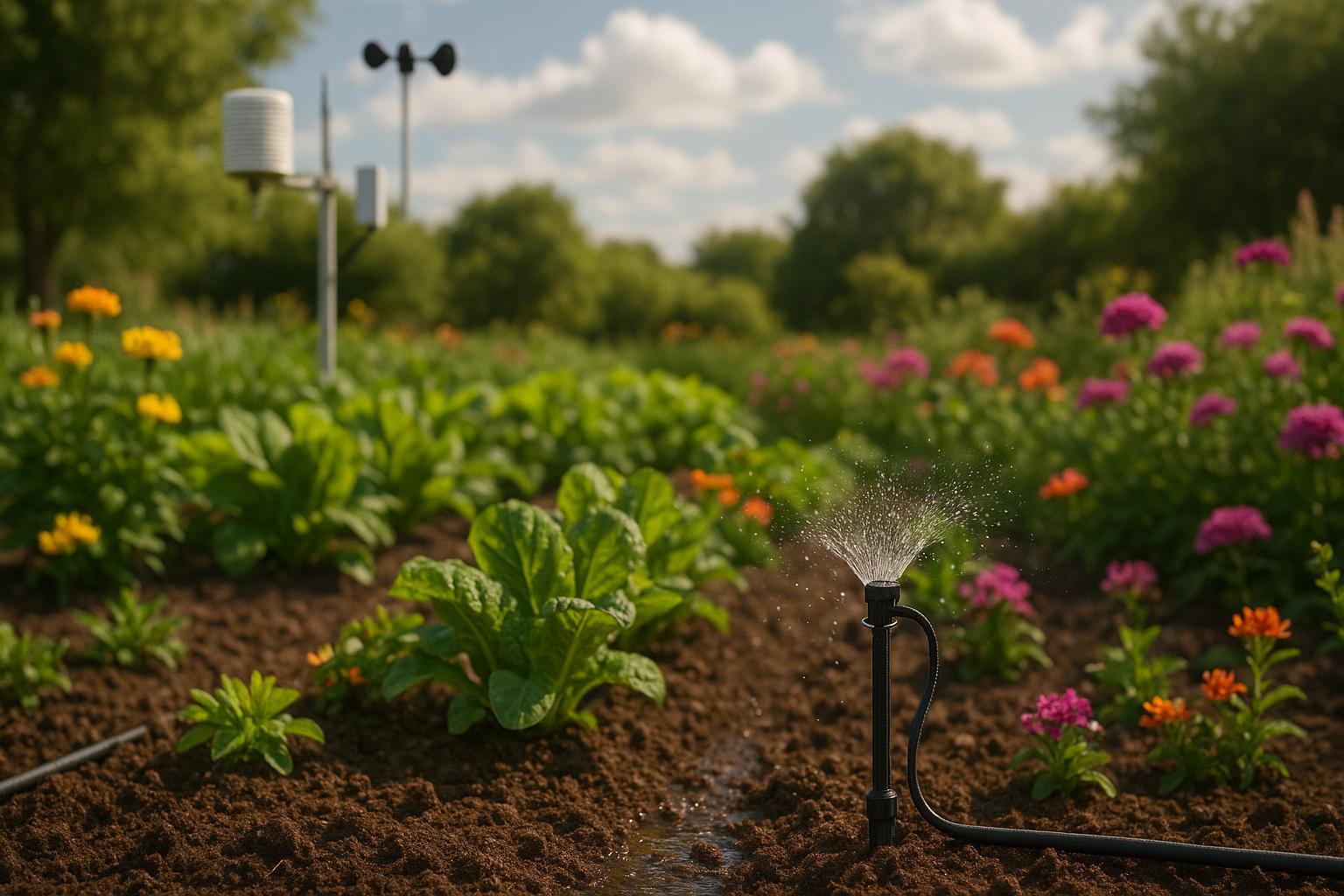
AI Tools for Seasonal Irrigation Forecasting
AI irrigation systems optimize water use and plant care by analyzing weather and soil conditions, ensuring healthier gardens and cost savings.
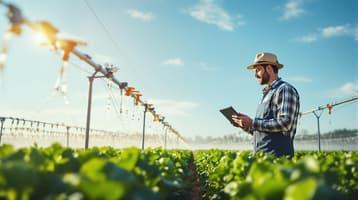
Precision Irrigation with AI: How It Works
Explore how AI-driven precision irrigation optimizes water use, reduces costs, and enhances plant health through smart technology.
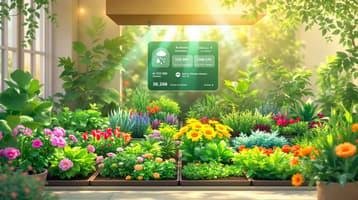
AI-Driven Rainfall Schedules for Every Climate
Utilize AI-driven rainfall schedules to enhance garden planning, conserve water, and ensure optimal plant care based on local climate conditions.
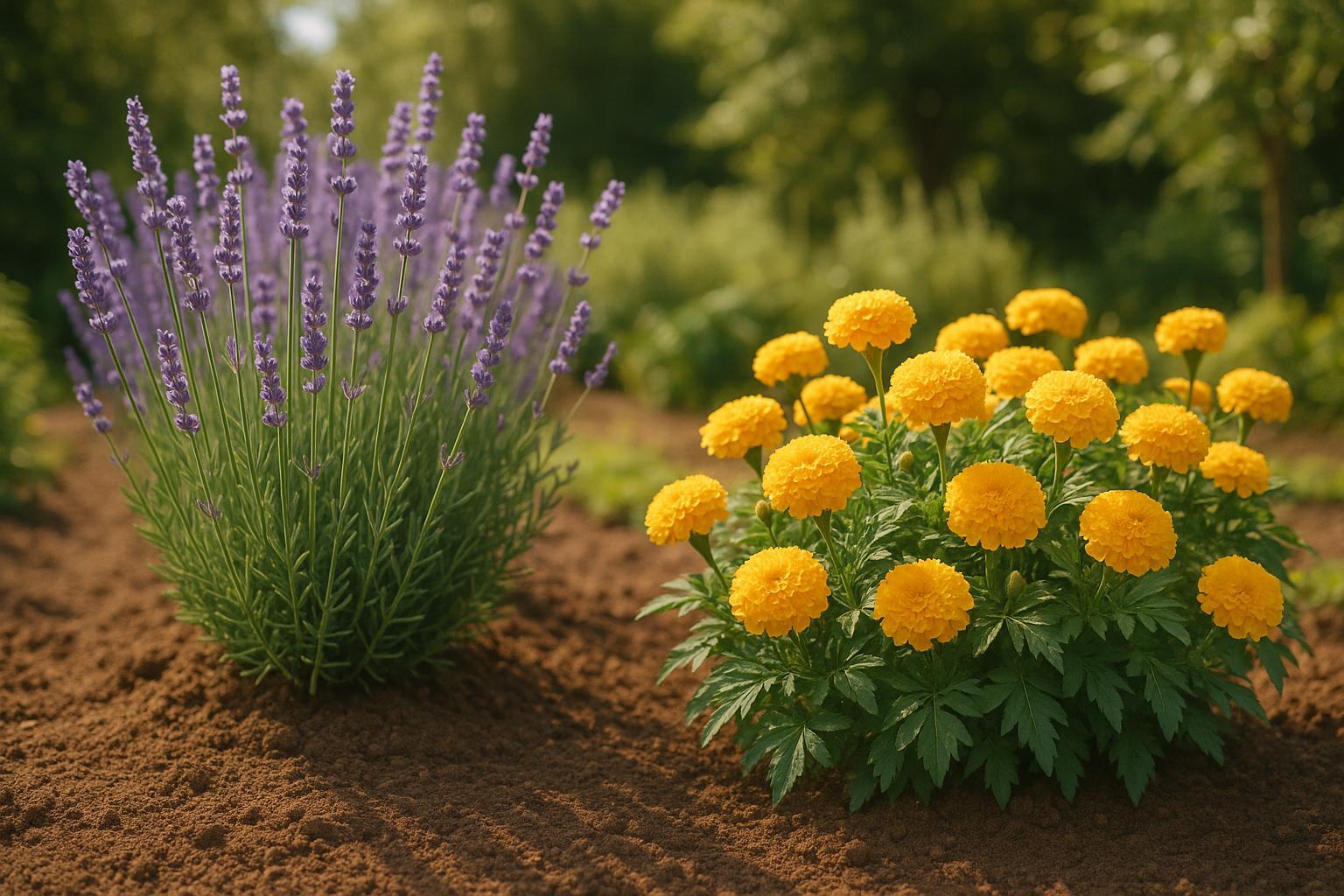
Best Plant Pairings with AI Suggestions
Explore how AI tools revolutionize gardening by providing personalized plant pairings based on climate, soil, and user preferences.

AI Garden Design for Japanese Zen Gardens
Effortlessly design your own Japanese Zen garden using AI tools that provide tailored suggestions and easy adjustments for any yard.
Enhance Your Garden with Beautiful Garden Arches: Design, Benefits, and Installation
Discover the beauty and functionality of garden arches in landscaping. Explore different designs, materials, benefits, and the simple installation process. Enhance your garden with a focal point and support for climbing plants.